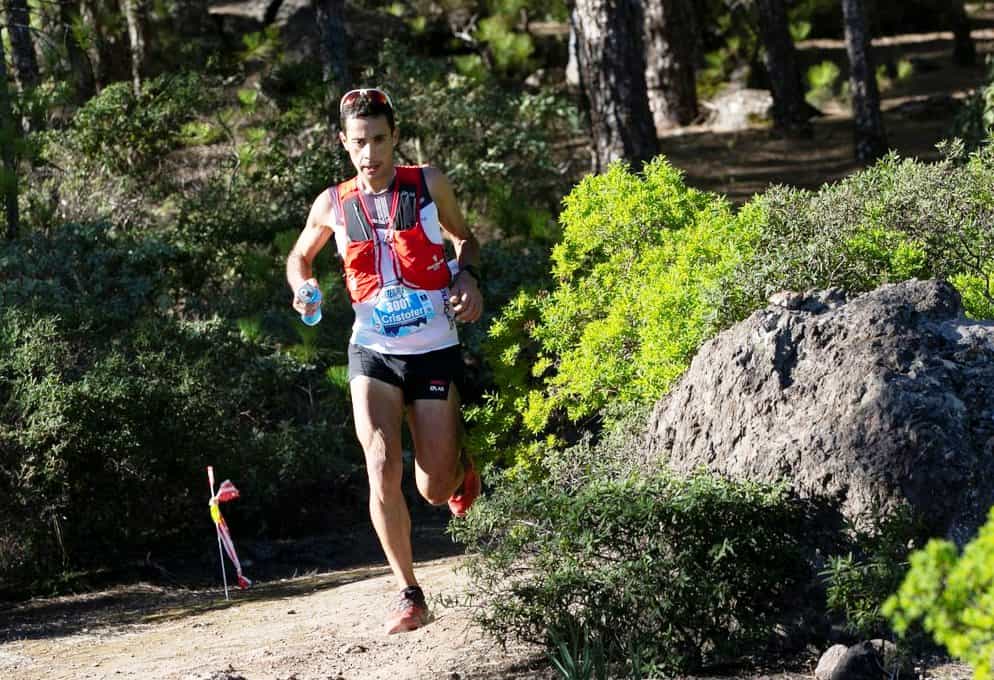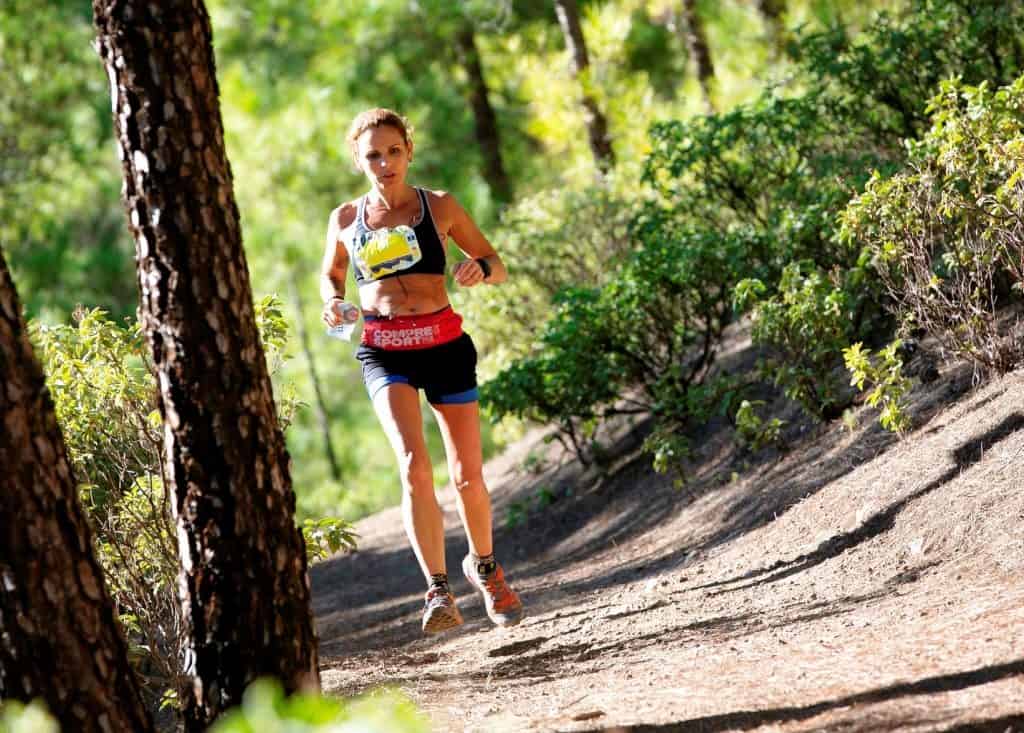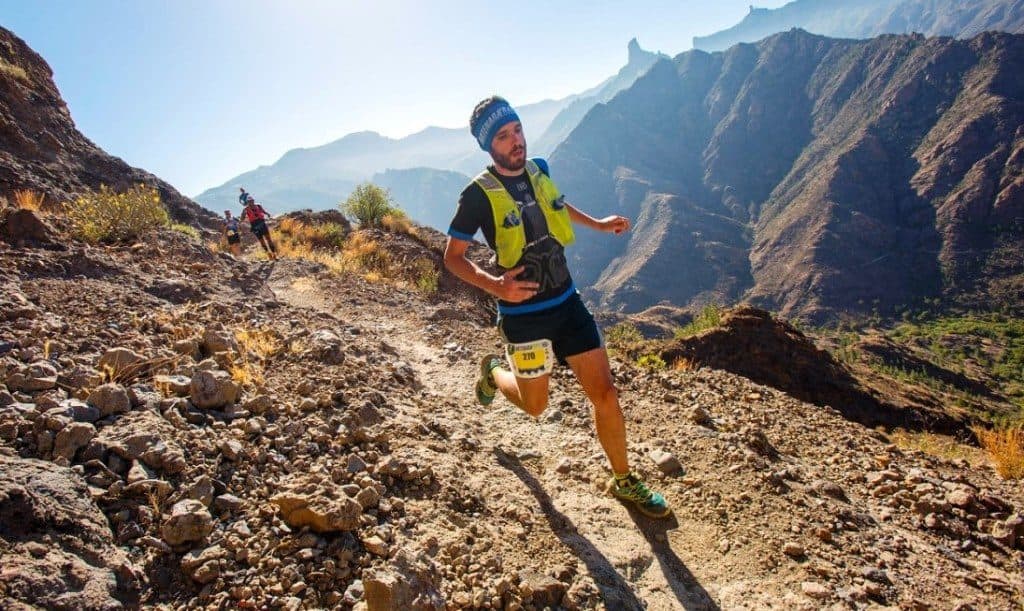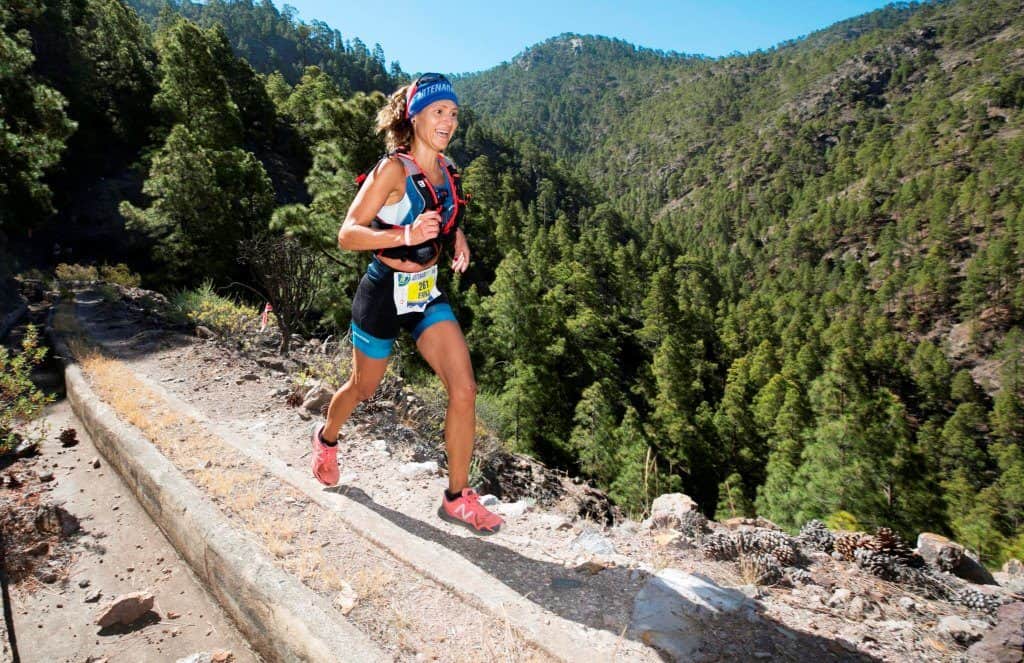
I was chatting to my road running buddy, in a gallant attempt to get him to join me on a morning run out on the scenic trails. His answer was an emphatic no. He wants to try for a personal record in the marathon and he had heard that doing any off road will make him a slower runner. That prompted be to delve deeper and see if there was any truth to his words.
Does trail running make you slower? The trail surface will force you to run slower than you do on a paved road. However, this has been shown to make you a faster runner. The Kenyan champions do the biggest volume of their training on dirt. And training on dirt has not slowed the Kenyans at all.
Why Trail Running Makes You Faster Rather Than Slower
By far the biggest way athletes sabotage their own progress is by running too fast on easy days. Those are the sage words of Brett Sutton, coach of current Ironman world champion Daniela Ryf and Ironman World Record Holder Chrissie Wellington. He has had a hand in all seven of the fastest ever women’s times in the Ironman triathlon.
The great thing about doing your easy, slow, recovery runs on the trails is that running on trails forces you to run a lot slower than you otherwise would. The direct benefit of running so much slower is that you stimulate the production of more blood capillaries. More capillaries equals more oxygen and less lactate. Both are good.
The other benefit is that you arrive at your next hard speed workout rested enough. That means you can go harder in your hard session and reap greater speed rewards than you could if you start the hard workout carrying fatigue.

Slow and Easy is Slower Than You Think
The easiest way to see if you have been running slow enough on your slow and easy day is whether you finish your run feeling as if you can go out and do the whole run again.
That is the great thing about getting out onto the trails. Make your run all about your surroundings, nature, the views, and the tranquility. That is what I do when I hit the trails. I forget about pacing completely. I keep my watch on distance and altitude, the two things I need to keep track of navigation.
Kenyan female athletes that are able to a 10k at faster than five minutes per mile pace routinely do eight minutes thirty seconds per mile or slower on dirt on their easy days. Sure, eight minutes thirty per mile will still feel very fast to many of us, including me. What is important here is how much slower than normal they run on their easy days.

Capillaries and Why You Need Them
Capillaries are the smallest blood vessels in the human body. You find them wrapped around each muscle fiber. They deliver oxygen and remove lactate. The amount of oxygen delivered to your muscles is the single biggest factor influencing your endurance sport performance. That is why EPO became so popular.
Therefore you can see that having capillaries is good. Having more capillaries to deliver more oxygen to each muscle fiber is even better.
How do you make more capillaries? The answer lies in a signal protein produced in your body called vascular endothelial growth factor. It is this VEGF that tells your body to produce more capillaries.
When you run slowly your body needs to keep pumping oxygen to your muscles to keep going. When you are sprinting there is little need to keep a constant flow of oxygen as it is too slow for the needs of your muscles.
Two medical studies, one in 2015 and the other in 2016 show that the amount of VEGF your body produces is in direct proportion to how slow you run. In other words, if you run slower you create more VEGF and consequently more capillaries.

Three Types of Muscle Fibers
You have three types of muscle fibers and you need two of them for distance running.
Type I are your classic slow twitch fibers that run on oxygen and you want to have covered in capillaries.
Type II fibers are your fast twitch fibers. These have two sub-categories. Type IIx fibers are your classic sprinter muscles and are fueled primarily on lactate and need almost no oxygen. Usain Bolt has LOTS of Type IIx fibers. Then you have Type IIa fibers. These are fast twitch fibers that are covered in capillaries. The extra oxygen supply means that they are able to behave like Type I fibers but have more explosive power.
For years sports scientists have debated the process how Type II fibers can become Type I fibers and vice versa. Current theory suggests that your Type I and Type II ratios are assigned genetically with little variation possible. What is possible is that with added capillarity your Type IIx fibers and become Type IIa because it does not alter the genetic makeup of the fiber.
Doing more slower running and the extra capillaries create more Type IIa fibers and suddenly you can run faster for longer.

Understanding Muscle Pump
This is something I learned in rock climbing but when you apply it to running and trail running in particular, lots of things will suddenly make sense.
My breakthrough came when I started looking at muscle fibers as mouse traps. All you need is a nerve impulse to spring the fiber into a contraction. Glycogen derived ATP is used with oxygen to reset the fiber, ready for the next contraction.
When a muscle fiber contracts it gets shorter and thicker. If two adjacent fibers contract at the same time they will squeeze some of the capillaries between them shut. That means less oxygen and a slower recovery of those fibers.
This the accumulated fatigue cycle when fibers are not reset before the next time the muscle is used. Running up hills recruits more fibers with each step than running on the flat. That leads to more fibers staying contracted, starved for oxygen by pinched capillaries.
This also explains why a muscle cramp does not release easily – the oxygen giving capillaries are squeezed shut.
As more and more fibers stay contracted after the remaining muscle is at rest, the muscle will appear to be larger as if it has been inflated. Hence the term muscle pump.
The solution is more capillaries. So even is your capillaries are squeezed down to 25% capacity the sheer volume of capillaries will still get the job done.

Keeping You Healthier
When you run at high intensities over and over again you a risk of over extending yourself and getting injured.
Additionally, high intensity running without proper recovery leads to elevated levels of the stress hormone cortisol. Elevated cortisol has a correlation to injury risk. It also slows recovery and disrupts sleep patterns. And, in turn, reduced sleep also elevates cortisol.
From my perspective, I didn’t get past 400 consecutive days of my run streak by getting injured.
Making the Hard Training Sessions Count
The adaptation you get from your hard power and speed workouts are what makes you faster.
There is, however, a direct correlation between how hard you are able to push during your hard session and the size of jump in your fitness and speed.
Carry fatigue into the session and you simply can’t push as hard as you could had you been fully rested.
The solution is stunningly simple. You need to make your slow days slow enough that your body can make a full recovery. If you don’t you will not be able to make your fast days fast enough to reap maximum reward.

Related Questions
Is trail running slower than road running? Trail running is slower than road running for two reasons and both relate to the surface. Firstly, trails are softer than roads so you don’t get that same responsive spring back from your shoes on each stride. Secondly, the more technical the trail the slower you will go to avoid tripping and plowing face first into the dirt and rocks as I have done more than once.
Does running slower make you faster? Doing 80% or more of your training volume at a slower pace will make you a faster runner. You will also be able to maintain a higher pace for longer. It is a system that works for Kenyan champions and it is a system that will work for you too.
All images courtesy of Artenara Trail, Gran Canaria, Spain. Check out their website for details of next year’s event.
